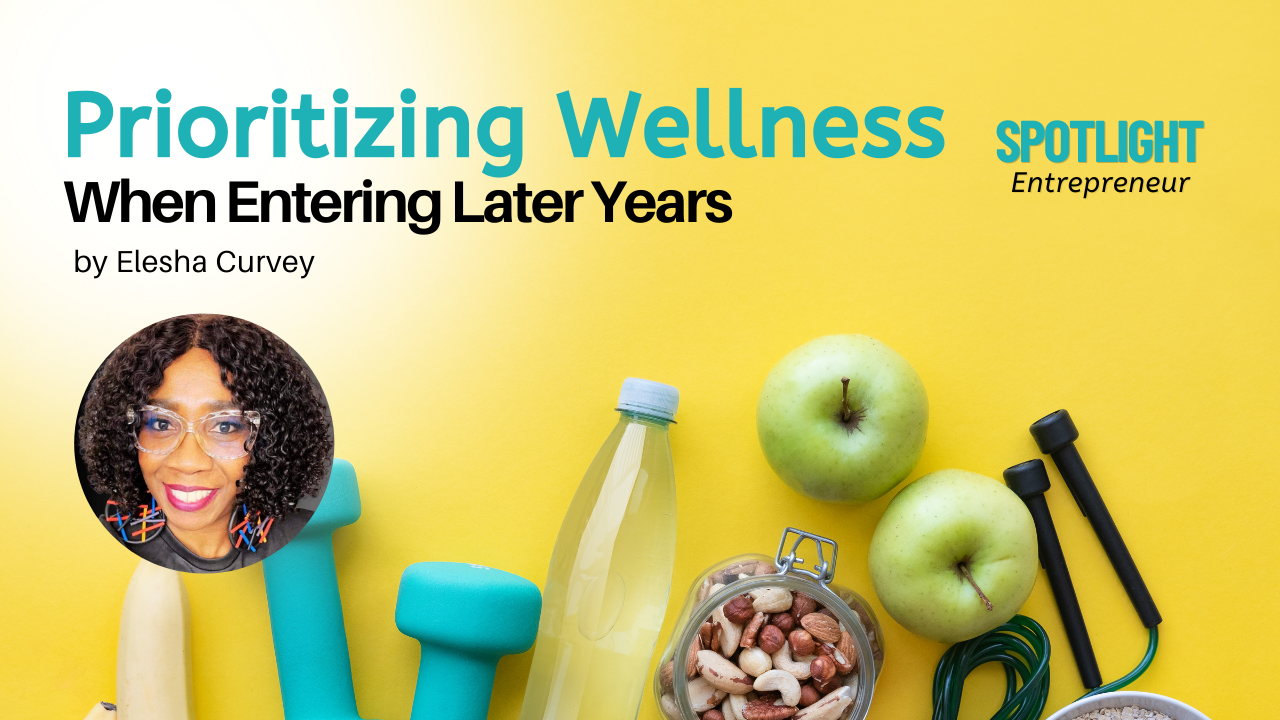|
This means I’m prioritizing my physical, mental, and emotional well-being. Placing more time and attention on my total wellness is now paramount for me, especially if I truly want to embrace this stage of life with vitality and grace. Stepping into my fifties this year marks the commencement of a new chapter in my life that is characterized by wisdom, experience, and a deeper understanding of myself. Alongside this milestone, I have a heightened awareness of the importance of maintaining wellness. As a woman entering the “50s Club”, I’m affectionately dubbing myself as a new "Golden Girl”. This means I’m prioritizing my physical, mental, and emotional well-being. Placing more time and attention on my total wellness is now paramount for me, especially if I truly want to embrace this stage of life with vitality and grace.
In this article I share my understanding, insights, wisdom, and information on why prioritizing wellness as we grow older matters, and some ways in which we can create a 50+ wellness lifestyle. Below are 5 essential self-care practices to include in our daily life to ensure that our fifties are a time of thriving and not just surviving. 1) Maintaining wellness as we age is crucial for overall well-being and quality of life. Our bodies undergo significant physical changes, rendering us more susceptible to chronic conditions like heart disease, diabetes, kidney failure, and arthritis. Prioritizing physical wellness through regular daily exercise, balanced nutrition, and sufficient sleep can mitigate these risks, enhance mobility, and improve overall physical function. 2)Aging can trigger cognitive changes, such as memory decline and decreased mental acuity. Engaging in daily mind-stimulating activities like reading, doing puzzles, playing card games, or acquiring new skills can maintain cognitive function and prevent age-related decline. Additionally, mindfulness practices and stress management techniques can also promote and support mental well-being and emotional resilience. 3) Social connection also plays a vital role in wellness. It can combat the prevalence of social isolation among older adults. Maintaining strong connections with family, friends, and community groups provides necessary emotional support, “belongingness”, and the reduction of the risk of loneliness and depression. 4) As we age, we will have to navigate emotion-laden life transitions like retirement, downsizing to another living space, and of course the loss of loved ones. These transitions are emotionally painful, require conscious, supported grieving, and necessitate our ability to access emotional resilience. We can cultivate this resilience through positive coping strategies, seeking professional support when needed, and remembering to nurture a sense of authentic purpose. Accepting and responding to life transitions in healthy and functional ways will enable us to navigate through these difficult challenges with graceful resilience. 5)Lastly, wellness in aging can be greatly enhanced when we embrace a holistic approach. This means that we include the growing of our emotional, social, and spiritual intelligences. Embracing this holistic approach means that we can achieve a more balanced and fulfilling life during our later years. The holistic approach truly promotes overall well-being and vitality -- from the inside-out. We live in a time when accessing information, books, videos, and classes (in-person or virtual) regarding the learning and growth of our emotional, social, and spiritual intelligences is easier than ever. I now want to share about the importance of preventive healthcare practices. As a result of the enormous population of Baby Boomers who have entered the aging process not wanting to experience the health challenges of their parents and grandparents, we now have a concept called “ageless wellness.” This is about doing preventive health practices and making a commitment to a timeless, long-lasting well-being as the foundation of your mature life. Here are five practical steps I highly recommend for stepping into ageless wellness: I now want to share about the importance of preventive healthcare practices. As a result of the enormous population of Baby Boomers who have entered the aging process not wanting to experience the health challenges of their parents and grandparents, we now have a concept called “ageless wellness.” This is about doing preventive health practices and making a commitment to a timeless, long-lasting well-being as the foundation of your mature life. Here are five practical steps I highly recommend for stepping into ageless wellness: Nourish Your Body: adopt a balanced diet rich in fruits, vegetables, non-GMO grains, lean proteins, and healthy fats; practicing mindful eating habits, such as knowing what and when is enough, will also support optimal health and vitality Embrace Lifelong Learning: stimulate your intellect and curiosity by pursuing lifelong learning opportunities, taking on-line or in-person continuing education courses, or taking up hobbies that require focus and hand movement; these and other uses of your brain will enhance cognitive function and mental well-being Travel for Wellness: explore new destinations and immerse yourself in different cultures through travel experiences that are specifically designed to support wellness; whether indulging in spa treatments or hiking in nature, travel offers opportunities for emotional rejuvenation, adventure, and personal growth from experiencing something new and different than your usual environment; appropriate travel can definitely contribute to your overall well-being Again, I truly believe that prioritizing wellness as we age is crucial. With proactive measures and holistic approaches, we can embrace aging gracefully, ensuring fulfilling later years. For more information and to learn about my coaching services, please visit my website www.coachcurvey.com
0 Comments
Leave a Reply. |
Categories
All
|


 RSS Feed
RSS Feed